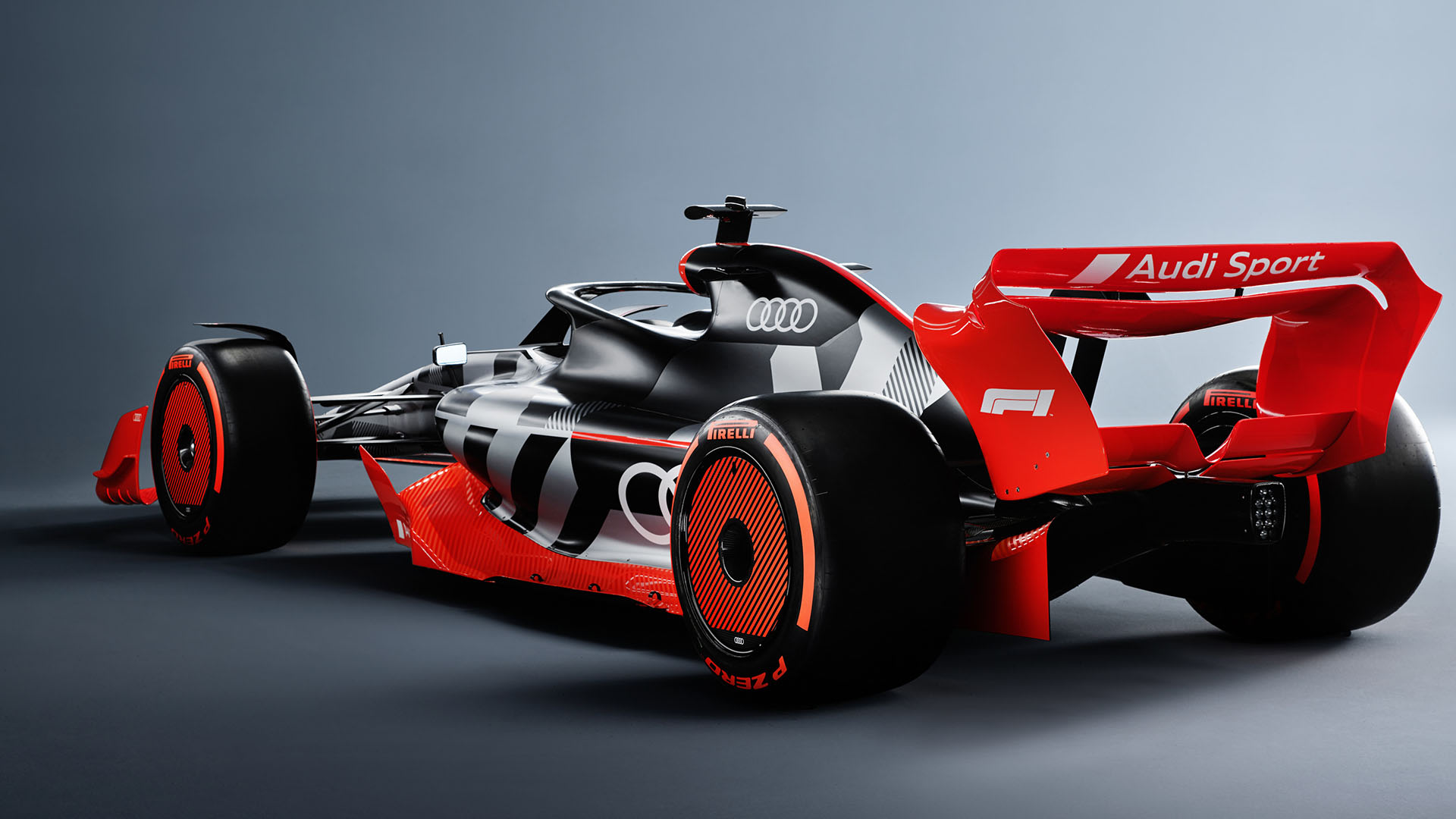The excitement surrounding the 2026 Formula 1 engine regulations is intensifying as more information leaks, providing insight into the ongoing development of the sport’s new power units. As the 2025 season progresses, manufacturers are racing against time to perfect their engines, facing new challenges, and working to stay ahead of the competition. With five major power unit manufacturers — Mercedes, Ferrari, Honda (in collaboration with Aston Martin), Red Bull (with technical support from Ford), and Audi — all vying for supremacy, the coming years in F1 could feature one of the most closely contested battles for engine supremacy in recent history.
1. Mercedes: The Front-Runners
Mercedes enters the 2026 engine development race as the current favorite. Their dominance in the turbo-hybrid era of Formula 1 (2014-2020) has been undisputed, and the German manufacturer’s pedigree in engine development remains strong. Reports from Sky Sports, AMUS, and other reputable sources suggest that Mercedes is leading the pack in terms of engine development.
Key drivers, like Carlos Sainz, have even cited the 2026 Mercedes power unit as a key factor in their move to different teams. Sainz’s switch to Williams is a testament to the confidence he has in Mercedes’ future power unit. Meanwhile, George Russell, another Mercedes driver, has spoken highly of the team’s progress with the 2026 engine, which suggests that Mercedes HPP (High Performance Powertrains) is well on track.
Mercedes has also faced early challenges with battery depletion, particularly in circuits like Monza, where the car requires heavy electrical energy. Despite this, team principal Toto Wolff remains confident in overcoming these issues. Mercedes’ extensive experience in Formula E and the AMG1 hypercar project offers them a clear edge in battery management. The team’s commitment to developing a balanced and effective 50/50 power split between the engine and the battery remains strong, with Wolff even addressing the suggestion of reconsidering the current split.
2. Ferrari: Close but Not Quite There
Ferrari is another manufacturer that is making strong strides with their 2026 power unit, though they may still trail Mercedes by a few horsepower. Historically, Ferrari has been known to have some growing pains at the beginning of a new regulation cycle, but they generally catch up quickly. Reports from sources like Autoraer and AMUS suggest that Ferrari is now on par with Mercedes, although the team may be trailing slightly in terms of power output.
Simulations carried out by Ferrari have revealed some similar issues to Mercedes, particularly with battery depletion on power-hungry circuits like Monza. Nevertheless, Ferrari is addressing these challenges, and reports indicate that their powertrain division is working diligently on these issues.
Ferrari’s strength lies in its ability to adapt and improve quickly. The team has recruited some top engineers, including former Mercedes and Honda engineers, further strengthening its engine development department. Despite some reservations from drivers like Charles Leclerc, who voiced his disinterest in the 2026 regulations, there is a sense that Ferrari’s engine will be competitive, possibly just a bit behind Mercedes in terms of performance.

3. Honda and Aston Martin: A Potential Dark Horse
The partnership between Aston Martin and Honda could prove to be one of the biggest surprises of the 2026 season. Aston Martin, while struggling in the 2025 season, is seeing promising results from Honda’s engine development. Honda, which has been a consistent force in F1 engine development over the last decade — especially with Red Bull — seems to be making significant progress with its 2026 engine.
Koji Watanabe, President of Honda Racing Corporation, recently shared that Honda is making smooth progress, and the collaboration with Adrian Newey, a genius in car design, could be a key factor in Aston Martin’s push to the front of the grid. However, they are facing some challenges with battery depletion, much like Ferrari and Mercedes, and are pushing the homologation of their engine design to incorporate the latest technological advancements.
Despite these challenges, the progress reported by Honda and Aston Martin is promising, and their engine could rival Ferrari’s and Mercedes’ power units by the time the 2026 season starts. If they continue to build on their current momentum, they could become a serious contender.

4. Red Bull: A Risky but Bold Move
Red Bull is taking a significant risk by developing their own powertrain for the first time in Formula 1 history. Traditionally, Red Bull has relied on Renault, followed by Honda, for their power units. In 2026, however, Red Bull is making a bold move by creating an in-house power unit with technical support from Ford.
Red Bull’s team principal, Christian Horner, has voiced concerns about the 50/50 power split between the engine and battery, particularly the issues with battery depletion. Despite these concerns, Red Bull is moving forward with their in-house powertrain, and early reports from AMUS suggest that their engine lags behind Mercedes and Ferrari in terms of both horsepower and battery performance.
However, Red Bull’s Helmut Marko has claimed that the team is just 6 horsepower behind Mercedes and 5 kW behind on the battery side. While this might suggest they are much closer to the front of the pack than many reports have suggested, the team’s open stance on potential rule changes could indicate that they are not as confident in their engine as they would like the world to believe.
5. Audi: The Struggling Newcomer
Audi, the newest entrant into the Formula 1 engine scene, is facing a steep learning curve. While Mercedes, Ferrari, and Honda have years of experience developing F1 engines, Audi is starting from scratch. Reports indicate that Audi is significantly behind its competitors, failing to meet key performance targets by a large margin.
Audi’s F1 chief, Matia Benot, has admitted that Audi is committed to the long-term project but will likely not have a competitive engine for at least the next four years. This long-term commitment is largely due to Formula 1’s increasing emphasis on electrical power and sustainable fuel. However, Audi will need to make rapid improvements to catch up with the front-runners, and whether they can achieve this within the current engine cycle remains to be seen.

Conclusion: The Road Ahead for 2026
As the development of the 2026 power units continues, it’s clear that Mercedes is the favorite, with Ferrari and Honda trailing closely behind. Red Bull, though taking a risk by developing their own engine, might not be far off the pace, while Audi is currently struggling to catch up.
The 2026 season promises to be one of the most exciting in Formula 1 history, with new engine regulations, a more aggressive aerodynamic approach, and potential surprises from teams like Aston Martin and Honda. As the engines evolve and the chassis improve, the competition is expected to be fierce, and it will be interesting to see who comes out on top in what could be a very thrilling era for the sport.
With the technical challenges these manufacturers are facing, including battery depletion issues and balancing the power split, it’s going to be a very intense development phase leading up to the 2026 season. Fans can expect a dramatic shift in the competitive order, with some teams possibly making unexpected leaps forward, while others might fall behind.





